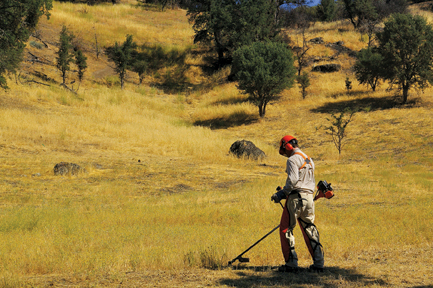Fall
Fall is a good time in Southern California to begin new plantings. The weather is beginning to cool down, yet temperatures are still warm enough to encourage germination. 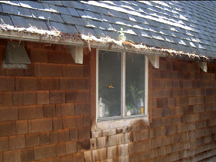
Ensure that your landscape is still fire-safe. Clear your roof of fallen debris to prevent ignition from flying embers in the event of a wildfire. Maintaining your property is a year-round task.
Debris on roof and in rain gutters
DROUGHT-TOLERANT LANDSCAPING
Create eye-catching gardens and landscapes that save water, prevent pollution, and protect the environment with drought-tolerant landscaping that uses designs and plants suited to local conditions.
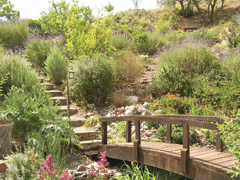
How to create a drought-tolerant landscape:
• Use California-friendly low-water-use plants
• Group plants according to their irrigation needs
• Limit turf areas to those needed for practical uses
• Use efficient irrigation systems
• Schedule irrigation wisely
• Make sure soil is healthy
• Remember to mulch
• Provide regular maintenance, especially to ensure fire resistance
A drought tolerant fire resistant landscape in defensible space zone 2. Photo and garden design by Jane Croft
Drought tolerant plants must be able to withstand low water and high-heat conditions while still maintaining their aesthetic and functional qualities.
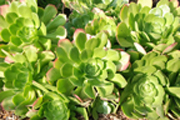
Many low-water-use plants actually avoid drought by producing wide-spreading or long roots to reach stored groundwater. These extensive root systems can also be beneficial for hillside stabilization. A variety of species on a slope – trees, shrubs, and perennials - will provide a range of root depths to help bind soil and rocks together.
Many drought-tolerant plants can be useful in areas of high fire danger. Some dry land plants are low-growing with a creeping or spreading habit; this low foliage along with open branching, limited leaf litter, and low quantities of flammable oils or resins contribute to fire-resistance. Be sure to water these plants as needed to maintain moisture.
*file0* - Cannot connect to file!
A wide assortment of native Southern California plants is perfectly suited to our climate’s low precipitation. Native species have evolved and adapted to the local weather over thousands of years. In their native habitat, they are tolerant of seasonal extremes, having adapted to survive winter cold and summer heat, periodic drought, wildfires, coastal conditions and high winds. Once established, many native species require little or no additional irrigation beyond normal rainfall. For more information about native plants, visit California Native Plant Society’s website at http://cnps.org.Another group of California-friendly plants are from Mediterranean-climate regions. This includes species from the Mediterranean Basin, South Africa, southwest Australia, and Central Chile. These plants use water-conserving techniques that allow them to withstand long, hot summers. When using any non-native plants, care must be taken to choose species that will not escape into the wild and displace native species. This is especially important with non-native drought tolerant species, as their adaptations make them able to survive and flourish under our local conditions - however, only a few of these non-native species are known to cause problems. Many invasive plants have aggressively invaded California’s wildlands, out-competing native species for water and other resources. For more about invasive plants, see the previous section on invasive plants and wildland health.
Water conservation and fire-safe landscaping are not contradictory terms: because drought tolerant gardens can be planted according to fire-safe principles, you can save water and be fire-safe at the same time.
During drought, both fire safety and water conservation become even more important. Dry vegetation in wildland areas increases the chance of devastating wildfires – but the best defense against this is to be vigilant about avoiding ignition. During a drought, fire personnel are faced with decreased water supply to fight fires, so it is especially important to conserve water.
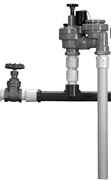
Maintenance is vital for both fire safety and drought tolerance. Don’t rely on simply choosing the right species of plant – any plant will burn under the right conditions. Healthy plants need less water and produce less dead fuel, and many plants can be trained to require less water if you promote root growth with deep, infrequent watering. Efficient irrigation makes it easy to maintain a landscape that is drought tolerant and fire-resistant.
Plan and maintain your landscape with these principles of water efficiency in mind and your property will continue to conserve water and be attractive. Proper landscaping techniques not only create beautiful landscapes, but also benefit the environment and save water. In addition, attractive, water-efficient, low-maintenance landscapes can increase home values. Drought-tolerant landscaping can offer many economic and environmental benefits, including:
• Lower water bills from reduced water use
• Reduced landscaping labor and maintenance costs
• Conservation of natural resources and preservation of habitat for plants and wildlife
• Reduced runoff of stormwater and irrigation water that carries top soils, fertilizers, and pesticides into lakes, rivers, and streams
• Fewer yard trimmings to be managed or landfilled
• Extended life for water resources infrastructure (e.g., reservoirs, treatment plants, groundwater aquifers), thus reduced taxpayer costs
DURING FIRE SEASON, TAKE STEPS TO REMAIN SAFE
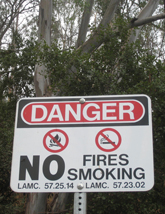
- Observe restrictions on fires, campfires, and barbeques at home and in parklands.
- Repair any problems with cars or other machinery that could cause sparks. Never throw burning cigarettes or matches out of a window!
- Maintain chimneys and spark arresters.
- Be aware of any parking restrictions on days with high fire risk – emergency vehicles may need access at any time.
- Become familiar with likely evacuation routes and centers in advance. Have a family plan and place to meet during a fire.
- During a fire, check news sources regularly for any specific instructions from fire and public health agencies – take heed of any evacuation orders from local fire agencies. Have a portable radio and spare batteries on hand.
- Reduce outdoor activities on smoky days.
- Pack any necessary materials (documents, medicines, extra food and clothing) and park vehicles oriented for a quick and easy exit.
- If evacuation is necessary, close all doors and windows to prevent ember entry into buildings. Lock doors and windows for security. The fire department will find a way in if they need to.
LATE SEASON FUEL MANGEMENT – CONDUCT WITH CARE!
